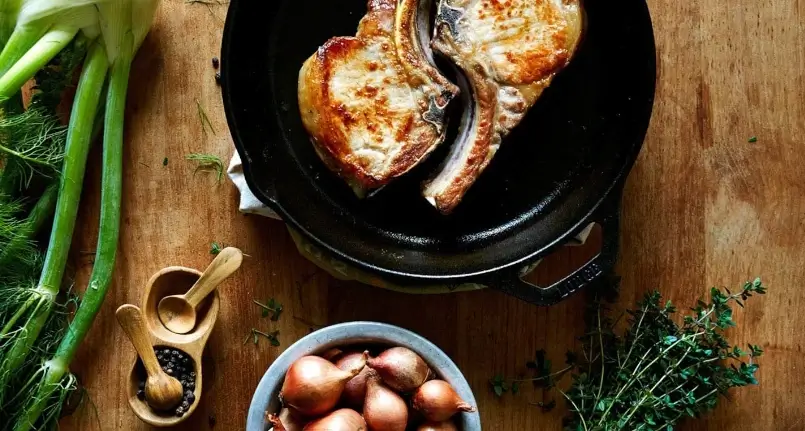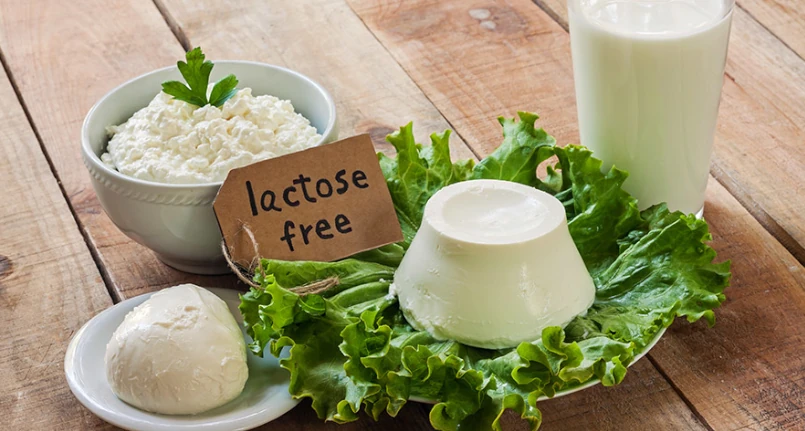Generalities and classification
Pork is included among the ” white meats ” as, after slaughtering, it takes on a much lighter color than that of ” red meats “: beef , horse , sheep, etc. and “black meat” or game : fallow deer, wild boar , deer , hare , pheasant , etc.; together with pork , they fall into the same category: chicken , turkey , rabbit , veal , lamb , kid
young etc. Some authors, however, include the pig in the group of red meats, especially as regards the meat cuts of adult specimens and those preserved.
Pork NEEDS complete cooking , meaning that it reaches the heart of the food; this is necessary for two reasons:
- Pork, like other white meats, reaches its maximum organoleptic and gustatory properties when cooked; undercooking the pork would penalize its flavour .
- Pork is subject to parasitic diseases (which affect the live animal) and bacterial contamination (during slaughtering); only complete cooking eliminates its harmfulness.
Pork is classified according to 4 methods:
- Age of the slaughtered animal : pork takes on different characteristics depending on the diet of the animal and the development of muscle mass . It can be deduced that the meat of a suckling pig ( porchetta of maximum 3 months, 25kg in weight ), compared to that of an adult pig (110-180kg), is considerably different both in texture (more tender) and in taste ( less intense).
- Breeding method : pigs can be raised at home or industrially; with regard to the latter type, the following are further differentiated: intensive, extensive and organic. Home rearing produces better quality pork, while intensive industrial rearing tends to offer a less appreciable product (as well as requiring a greater use of medicines). On the other hand, extensive industrial breeding represents a good compromise between profitability and production costs, while pork obtained from organic farms (although of very good quality) is distinguished by decidedly higher and not always sustainable costs. The difference between the 4 types of pork mainly concerns the flavor and the amount of watermuscle (higher in intensively farmed animals).
- Normal feeding or overfeeding : pig breeding can be aimed at slaughtering a heavy or light animal; while the heavy pig is older and heavily overfed (it can reach almost 180-200 kg in weight), the light one rarely exceeds 100-110 kg. The heavy pig is therefore much fatter and is destined for the production of preserved meat ( cured meats and salted meats), on the contrary, the light one represents the primary source of fresh and ready-to-eat meat.
- Sizes of the pig : as for all other animals, a distinction of the various sizes is also used in the pig. After slaughter, the animal is then divided into several parts; below we will list them all, but without going into too much detail:
- Head : divided into lean, bone and fat; the pig’s head is used both for food production and for the production of protein flours for zootechnical use
- Throat and guanciale : these are made up of fat from the area between the head and the shoulder; these parts are essential in the packaging of raw and cooked sausages but can also be used for the production of a very fine salami.
- Shoulder : from this portion of the pig a meat suitable for the production of a cooked salami called “cooked shoulder” (very similar to cooked ham ) is obtained; the rump (for salami ) and the muscle (for cotechino , pot salami, frankfurters , etc.) can also be obtained from it .
- Pancetta : it is the front part of the ribs; it can be divided into a lean part and a fat part . The fatty one is ideal for the production of rolled bacon, stretched bacon , etc., while the “lean” bacon is a classic cut of fresh fatty pork meat.
- Coscia : it is the cut of the finest pork. It is used for the production of raw ham , cooked ham or even for salami, but it doesn’t look bad if broken down into the various muscles and used as fresh lean pork.
- Coppa or capocollo : suitably cleaned, it is one of the ingredients of salami and cooked ham; they too constitute a fatty piece of fresh pork meat.
- Loin or loin : it is divided into three parts: carré, loin and capocollo (the latter has already been described). The carré is generally dedicated to the production of chops , while the lonza is intended for the production of boneless steaks; they are both to be framed among the fresh and lean pork meats.
- Paws : they are emptied and used as a container for the trotters .
- Fat : subdivided into lard , lard, perirenal fat (or suet), hard back, throat fat. They are all used for the preparation of raw and cooked sausages except the suet which, after processing, is destined to become lard .
- Rind : it is the skin of the pig previously cleaned and scraped. If ground, it becomes part of the cotechino and zampone, while the excess becomes animal gelatine . The rind is a fatty cut since it includes the subcutaneous fat; eliminating the latter, the rind would not have excessive calories.
- Offal : they constitute (together with the rind, the bones, the blood, the bristles, the nails and the visceral fat ) the fifth quarter of the pig and have totally different applications; the offal must be evaluated one by one as they possess completely heterogeneous nutritional characteristics. On average, offal constitutes pork rich in cholesterol , but not necessarily very caloric. What is left over after slaughter and the production of cured meats is used for the production of animal meal.
Hygienic aspects
As mentioned above, fresh pork is a white meat that requires thorough cooking; RAW cured meats and sausages, on the other hand, are produced with processes that prevent bacterial proliferation during the entire conservation period, even if this does not exclude that the meat may be infested from the very beginning or infected during slaughtering (which is why cured meats and raw sausages are totally contraindicated in the diet of pregnant women ).
From a microbiological point of view, pork tends to be prone to bacterial contamination of: Salmonella and Yersinia enterocolica ; furthermore, considering the propensity of the animal in question to parasitosis, it cannot be excluded that its meat may contain: Trichinella spiralis and Toxoplasma gondii .
We remind once again that the only method to guarantee the wholesomeness of pork is total cooking, i.e. cooking it reaches the heart of the food and exceeds a temperature of 70°C.Nutritional characteristics
FRESH pork is a product of animal origin that contains an excellent quantity of proteins with a high biological value and provides a variable lipid ration especially based on the type of pig (light or heavy) and the designated size; fatty cuts of heavy pork can reach and exceed 300kcal (e.g. fresh bacon), while lean cuts of light pork do not much exceed 100-140kcal (e.g. leg or loin).
Being a product of animal origin, pork contains mainly saturated cholesterol and fatty acids (which make up triglycerides ) .N.B. _ Both saturated fatty acids and cholesterol represent an unfavorable element for cholesterol metabolism , since they tend to increase the bad cholesterol circulating in the blood ( LDL cholesterol ); this means that, in case of hypercholesterolemia , pork (but not only that) is a food to be consumed in moderation .
Pork brings good quantities of water-soluble vitamins such as: thiamin , riboflavin and niacin , and there is no lack of mineral salts which are very useful to the body such as: iron ,potassium and phosphorus .Recipes
Pork chops stuffed with mushrooms and cheese on a bed of apples
Alice, our PersonalCooker, is on air on MypersonaltrainerTv to explain step by step how to transform “simple” pork chops into an irresistible dish even for the most reluctant to embrace new culinary trends.




